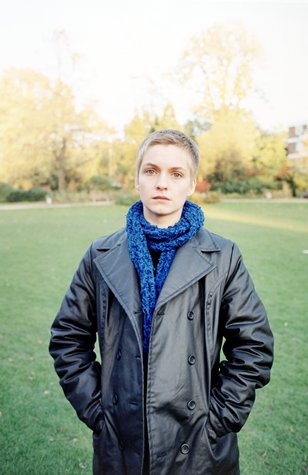Aires de Jeux, Champs de Tensions // Playgrounds, Fields of Tension.
Figures de la photographie urbaine en Europe depuis 1970.
Figures in European urban photography since 1970.
Currently showing at: Pavillon Populaire, Montpellier France.
25th February – 24th April 2011
Featuring the works of:
Bogdan Dziworski My View, Polish Impressions in Photography 1970
Seiichi Furuya Berlin-Est 1980
Jitka Hanslova Bewohner / Habitants 1994-1997
Helmut Kandi
Chris Killip In Fragrante 1988
Boris Mikailov At Dusk 1993
Muntean-Rosenblum To Die For 2001
David Rosenfeld Charades 1999
Christoph Rutimann Handlauf: Picadilly 2007
Micheal Schmidt Waffenruhe 1980
Wolfgang Tillmans Subways in London
Octavian Trauttmansdorff
Sergej Vutuc
On Regarding the Exhibits
Having been previously unacquainted with her work, it was a pleasure to view Bewohner by Jitka Hanzlova. This corpus studies the inhabitants of a bleak industrialized estate where the modern buildings of the early 90s cast a disjointed and dismal shadow over their environment. The images are softly spoken, they appear to document the inhabitants but in the same instance it is unavoidable to leave the firm gaze of each subject. They are at once quiet and strong; humbling the viewer through their prevalent presence in the frame. Combined with the soft, sombre tonal palette of Bewohner, Jitka Hanzlova raises the question; how much does our environment truly reflect within us?
Aires de Jeux, Champs de Tension, as exhibited in the Pavillon Populaire in Montpellier, France, donates a large expanse of running wall to a continuous photographic installation by Octavian Trauttmansdorff. The way the space is laid out, it is unavoidable but to walk past the entire piece as it dominates one side of a narrow pathway down the upstairs exhibition space. When I had encountered the first specimen of this work in the downstairs gallery space I gave it a glance and walked on by – assuming on appearence that it was ‘not my cup of tea’. However, when funnelled through the upstairs gallery space I realised the impact the work was bearing on me. It was not that I simply wanted to avoid the piece because I was not interested, but I wanted to actively remove myself from it. The scale of the work – encompassing a good metre plus in height and traversing the entire side of a gallery wall (approx 10m) – created a virtual window to a busy urban space. On the most part, the subjects walked past (or was it me walking past them?) but occasionally one of them caught my glimpse and met my eyes in a penetrating stare – it was in these brief encounters that I realised the weight of Trauttmansdorff’s work; I had become a very active voyeur in his world and his subjects seemed to know it. In addition, Trauttmansdorff’s method of applying his images to the paper, through what appears to be having painted on the developer and fixative loosely before working back into the piece with knives and tension – creating fissures and breaks in the piece, lends me to question the similarity of this presentation to the advertising posters you might see on the underground. As if Trauttmansdorff is putting you, or us, back into the equation. Questioning whether we are looking; whether we should be looking.
The exhibition’s book, including work and essays on all the featured artists can be purchased here.




